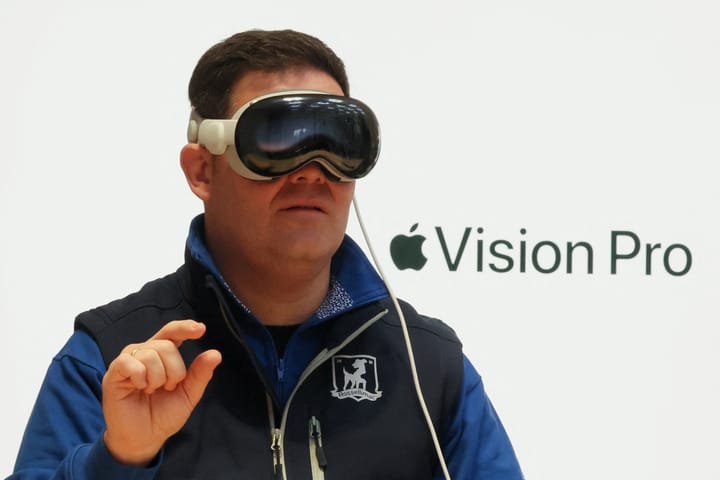Professional secrets for improving your job search

A few minutes every morning is all you need.
Stay up to date on the world's Headlines and Human Stories. It's fun, it's factual, it's fluff-free.
There’s no magic in looking for a job, and there’s no getting around the fact that job searching is hard work. But, what if there were secrets for improving your job search that have been used by thousands of people to find a job faster? Too good to be true? The proof is in the practice. We have compiled these professional secrets that will make your job search easier and more successful.
Be the answer
Did you know that your job search can be summarized in one sentence? Actually, it’s only three words: “Be the answer.” Your full time job is to prove that you are the answer to the employer’s needs. Nothing more and nothing less. Embracing this philosophy will dramatically shift your approach to the job market because every action you take from now on will be employer-centric.
Employer’s don’t have time to listen to or really care about what your job search objectives are. That’s because employers often only focus on what’s in it for them.
Answer this question by clearly demonstrating how your talent fills a need in their organization – especially one they are striving to fill quickly. If you can illustrate how you are the answer to their hiring challenge, they will listen and may even hire you.
Create a personal marketing plan
To be competitive in the marketplace, you must recognize that in the eyes of employers you are both a person and a product with unique talents and abilities. Even the finest products won’t succeed without a strong marketing strategy. Your personal marketing plan begins with an overall, yet flexible, design – an understanding of your target audience in the marketplace and a focus on the types of employers who are looking for someone with your qualifications, skills and background.
The key elements to creating an effective personal marketing plan are:
A bridge statement
This is a non-emotional account of what happened when you lost your job. This statement creates a “bridge" connecting your job loss to your current status and then indicates the direction you are heading. Think of it as the answer to the question, “What really happened?”
A career summary
This is a forward-looking statement that summarizes who you are, what you have accomplished and where you are targeting yourself to go next. Your career summary should be packed with keywords to ensure your resume gets read by another person. Think of it as a positioning statement – your career summary sets the platform for your job search campaign. It is the most critical part of your résumé and the bedrock of your job campaign.
A résumé
Aim to stop employers in their tracks. Your goal is to have hiring authorities pause and pay attention to your job application, cover letter and résumé. You want to break through the clutter of the hundreds of résumés sent for each position posted. The key to doing this is creating easy-to-read, technology friendly documents.
Five critical parts of a résumé include your contact information, career summary, areas of expertise, chronological job history and education background. A well written résumé establishes your brand. It creates a distinct impression of thoughtfulness, professionalism and qualification, while also communicating the brand you are creating. It establishes a unique imprint. In many cases, visually friendly and direct information will cause decision makers to pause and take the time to process the presentation of your brand as it applies to the needs of their company.
30-second commercial
Imagine a commercial which breaks down your career summary to the most important points. You can determine how much needs to be abridged by reading your career summary out loud and timing yourself. It’s good to have a memorable hook at the very end of your commercial so that they will remember you.
Business cards
These serve as a mini résumé. One side has your contact information, your title and up to three key bullet points. The other side contains your career summary from your résumé. This is a time-tested strategy, and because they are easily carried in a wallet or purse, they are easily passed along to others. Once we return to in-person networking post COVID-19, be sure to hand them out two at a time, saying “here’s one for you, and one to pass along.” You will be surprised at how many will end up in the hands of hiring managers.
Your unique differential advantages
These are the strategic benefits and experience that only you can provide. Focusing your job search around your unique differential advantage enables you to eliminate the positions you do not qualify for, thus allowing you to concentrate on jobs that do require your skills and talents. Concentrating on your unique skills will create momentum as you move forward in your job search. It will reduce frustration, save time and energy and help to quickly eliminate dead ends. By investing the time to figure out your unique differential advantage, you will save hours of frustration and reduce the overall length of time you are out of work.
A target list of companies
This is the opposite of what most job seekers do. To create a target company list, you must invest the time to research and pinpoint what types of organizations you most want to join. Your list should contain 35-50 company names segmented into distinct categories or industries. The sooner you aim at specific employers, the greater your focus will be and the sooner you’ll get to meet decision makers at these firms.
The hidden language of the internet
Keywords are the search terms recruiters and hiring managers use to identify candidates for open positions. Keywords are a phrase or an abbreviation for recognized skills. For example, if “MS Office,” (the abbreviation for Microsoft Office), appears on a résumé, it means the candidate is skilled with software like Word, Excel, PowerPoint and Outlook.
Keywords can be industry specific, like the information technology term “C++,” which represents one of the most popular back-end programming languages currently used by companies.
Keywords can also define strategic responsibilities – like Project Management, Product Implementation, Analysis, Training or Customer Service.
Keywords illustrate abilities. Your abilities are compared to the job requirements and then measured against the “keywords” used by a decision maker trying to find the right person to hire.
If your resume does not have any of the correct keywords, it may never be passed along or seriously considered.
The “T” Square cover letter – 100% of the keywords, 100% of the time
A cover letter is a written introduction of you; a “T" Square cover letter presents your experiences as a potential match with the qualifications an employer is looking for to fill an open position. The cover letter provides a snapshot of your résumé – your personal information directed to a particular individual at a specific company, providing the title of the available position and how you learned about it (online, print advertisement or personal recommendation).
The focus of the “T" Square cover letter is to match your abilities to the job requirements. This quick snapshot allows the human resources representative or outside recruiter to quickly match the positions “must haves” (keywords) with your qualifications. Even if a software is employed to electronically scan for keywords, this match of experience to requirements is an easy way to identify potential applicants.
The T-square cover letter links your introduction to your attached, detailed résumé. By matching your abilities with the employer’s requirements, you capture 100% of the keywords (their requirements), 100% of the time (your abilities). What better way of making a qualified first impression and enticing the recipient to read deeper into your résumé?
Avoiding the black hole – understanding Applicant Tracking Systems
Over 98% of Fortune 500 companies use Applicant Tracking Systems (ATS). An ATS is a type of software designed for both employers and recruiters. With an ATS, applicants upload contact information, experience, educational background, résumé and a cover letter into a job board system or database. The information is then transferred from one section of the system to another as the candidate moves through the hiring process.
Internal or external company recruiters can review the application and decide what next steps (if any) are appropriate. ATS is very efficient and can eliminate hundreds of applications on hundreds of posted job positions with little or no human interaction. Once the parameters (must-haves) of a position are set, your résumé has little or no chance making it through the initial, automated screening process if you lack the predetermined keywords. ATS programs make hiring a much easier task from an employer’s perspective, but are very impersonal for job seekers (sadly, taking the “human” out of human resources).
Remember that recruiters and hiring managers read only those résumés or applications that match a job’s preset keywords. With ATS, there is no independent judgment. Nobody is at the other end who may read the resume and think, “This is an interesting résumé. She may not meet all of the requirements for this position, but, we could train her and then she would qualify for the newly created (but not yet posted) position. She looks good on paper, let’s bring her in, and see what she is like in person.” Regrettably, those days of recruitment are long gone.
Conduct a horizontal job search
Finally, remember that employers use multiple online resources across the internet to find out more about you. You can follow all of these tips, but if your social media profiles do not have a consistent “feel” across LinkedIn, Facebook, Twitter, Instagram, Snapchat, YouTube, Pinterest, Indeed, SimplyHired, etc., it will create an immediate disconnect with a potential employer. You can’t predict where an employer will land in reaction to elements of your horizontal job search. You can even lose your job based on something in your social media portfolio. Before you start your job search, please make sure you check your privacy settings to avoid embarrassment and potential elimination from job opportunities.
Thousands of people have already gone back to work by applying these professional job secrets. Believe it or not, your next job will come to you. You just don’t know how, when or who will bring it to you. So, it’s important to be vigilant and prepared in all steps of the process.
This article was contributed by Damian Birkel, Founder and Executive Director of Professionals In Transition Support Group, Inc, a nationally recognized nonprofit organization that has served over 10,000 people since 1992. Birkel is also a HarperCollins author of titles such as “The Job Search Checklist” and “Career Bounceback.”
Have a story to share? Get in touch at contributors@themilsource.com




Comments ()